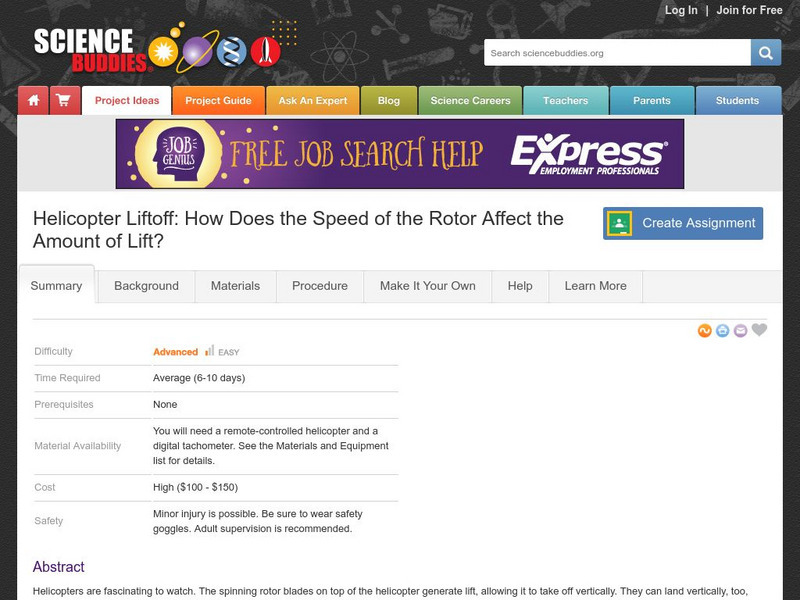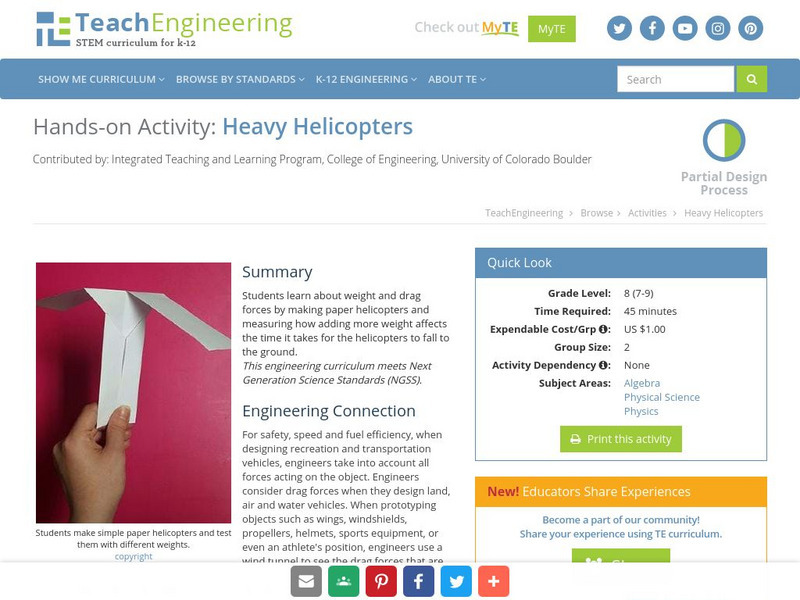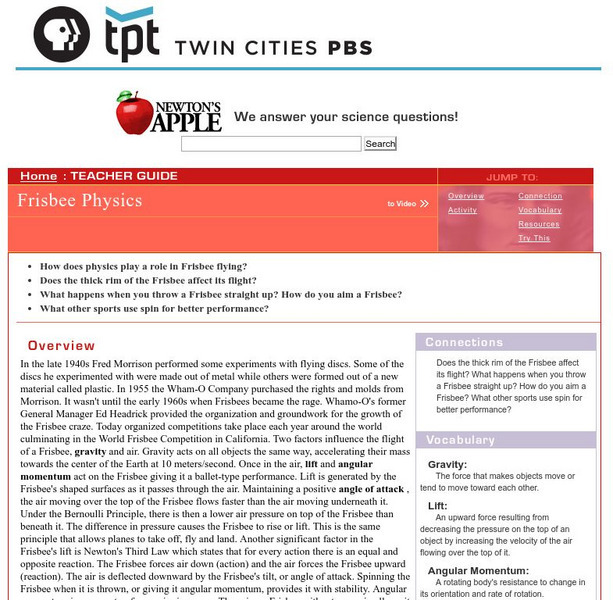Science Buddies
Science Buddies: Project Ideas: Helicopter Liftoff: Rotor Speed Affect on Lift
In this science fair project, measure the rate of rotation of a remote-controlled helicopter rotor, using a digital tachometer, and relate this to the lift the blade generates. The Science Buddies project ideas are set up consistently...
Science Buddies
Science Buddies: Efficient Propeller Design
There's a lot to understand about the simple propeller to see how it affects lift and thrust in an airplane or helicopter. This Science Buddies project gives you lots of ideas on how to change the design of the propeller to achieve...
TeachEngineering
Teach Engineering: Heavy Helicopters
Students learn about weight and drag forces by making paper helicopters and measuring how adding more weight affects the time it takes for the helicopters to fall to the ground.
Other
Crouse Law Offices: How Helicopters Work
Explains what aerodynamic principles and elements of its design enable a helicopter to fly.
Michigan Reach Out
Nasa Trc: Maple Seed Helicopters
Students study the aerodynamic properties of a maple seed and then apply what they observe making their own flying object.
Exploratorium
Exploratorium: Roto Copter
Students can experiment with a home-made helicopter that lets them change the blades to see how real aerodynamics work.
Museum of Science
Museum of Science and Industry, Chicago: Activities: Make and Fly a Helicopter
Print and cut out the template for the helicopter. Then experiment with adding and subtracting weight, or changing the shape of the copter or the blades to see what makes it fly best.
Science and Mathematics Initiative for Learning Enhancement (SMILE)
Smile: Lab Activity: Helicopter
The Illinois Institute of Technology lets learners investigate the aerodynamics of a helicopter, focusing on the variables which effect the lift, thrust, drag, and weight. Students investigate the effects of aerodynamics on a wide board.
Other
Easy to Make Paper Airplanes
Have fun making different kinds of flying vehicles. You will learn how to make a paper airplane, helicopter, rocket, blimp, etc.
TeachEngineering
Teach Engineering: What Makes Airplanes Fly?
Students begin to explore the idea of a force. To further their understanding of drag, gravity and weight, they conduct activities that model the behavior of parachutes and helicopters. An associated literacy activity engages the class...
Science and Mathematics Initiative for Learning Enhancement (SMILE)
Smile: Lab Activity: Aviation
This site from the Illinois Institute of Technology provides a student lab activity in which the flight of a paper airplane is investigated and studied. Designed for primary grades, but easily adaptable for junior high young scholars.
PBS
Newton's Apple: Frisbee Physics
This teacher's guide from Public Television's Newton's Apple discusses and illustrates the physics principles governing the flight of a frisbee. Includes teacher lesson plans, activity ideas, discussion questions, and information about...
National Academy of Engineering
Greatest Achievements: Airplane
This page provides an overview of the history behind one of the greatest engineering innovations of all time:the airplane. There is also a timeline showing its development.
Curated OER
Roto Copter
Students can experiment with a home-made helicopter that lets them change the blades to see how real aerodynamics work.
Curated OER
Roto Copter
Students can experiment with a home-made helicopter that lets them change the blades to see how real aerodynamics work.
Curated OER
Roto Copter
Students can experiment with a home-made helicopter that lets them change the blades to see how real aerodynamics work.












